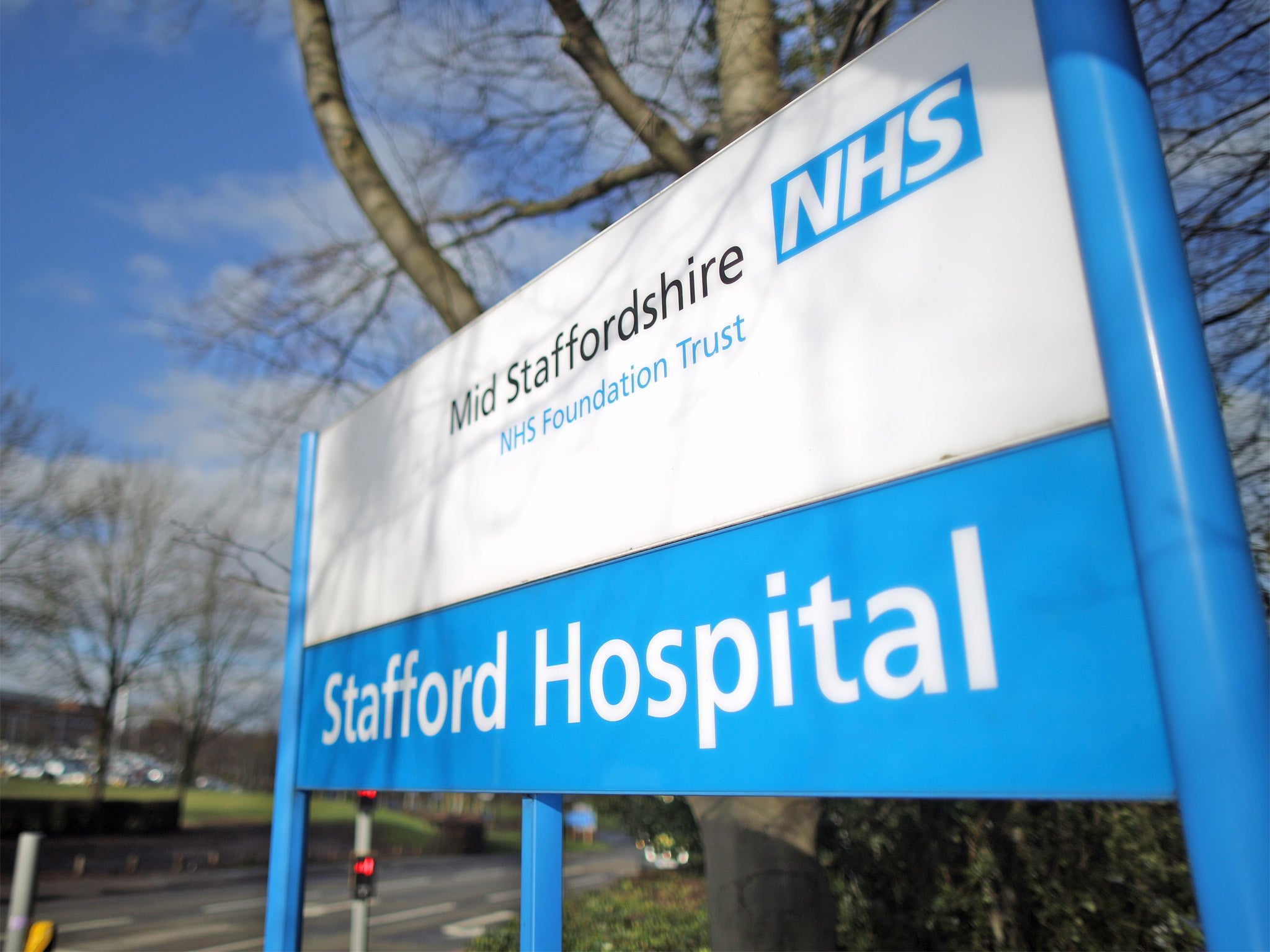Mid Staffs inquiry: how a 10-year cover-up was uncovered
The truth is out – thanks to the persistence of a group of relatives

Your support helps us to tell the story
From reproductive rights to climate change to Big Tech, The Independent is on the ground when the story is developing. Whether it's investigating the financials of Elon Musk's pro-Trump PAC or producing our latest documentary, 'The A Word', which shines a light on the American women fighting for reproductive rights, we know how important it is to parse out the facts from the messaging.
At such a critical moment in US history, we need reporters on the ground. Your donation allows us to keep sending journalists to speak to both sides of the story.
The Independent is trusted by Americans across the entire political spectrum. And unlike many other quality news outlets, we choose not to lock Americans out of our reporting and analysis with paywalls. We believe quality journalism should be available to everyone, paid for by those who can afford it.
Your support makes all the difference.The appalling care and neglect uncovered at Stafford Hospital did not develop overnight. Warning signs had been in evidence for years but were ignored or overlooked by every organisation responsible for regulating the NHS, up to and including the Department of Health.
As early as 2002, the Commission for Health Improvement published a highly critical report describing a lack of governance, poor culture and some staff “under constant pressure”.
Its successor, the Healthcare Commission, nevertheless failed to detect the scale of the unfolding disaster for most of its existence from 2004 to 2009 because it was over-reliant on self-assessment by trusts of their performance, the inquiry said.
Staff who did speak out were ignored. Helen Donnelly, an accident and emergency nurse, told the inquiry she had raised concerns about poor care in 2007, provoking a hostile reaction from colleagues – who warned her to “watch her back”.
Chris Turner, a junior doctor in A&E in 2007, described the department as “an absolute disaster” and “immune to the sound of pain”. He repeatedly complained to managers at the trust and eventually contacted the West Midlands postgraduate dean, but nothing happened.
Peter Daggett, a consultant physician, repeatedly raised concerns with management over a number of years. He too was ignored but he did not take his concerns to a higher level.
Meanwhile death rates at the trust had been rising; by 2007 they were 27 per cent above the national average. It is estimated that the number of deaths at the hospital was 492 more than would have been expected between 2005 and 2008, and as many as 1,200 more between 1996 and 2008.
This should have rung alarm bells and prompted a detailed investigation. Instead, the trust commissioned a report from academics at Birmingham University who cast doubt on the relevance of the figures. At a subsequent board meeting the trust concluded that “no clinically significant problems” could be attributed to the high death rate.
The same year, Julie Bailey, whose mother, Bella, had died at the hospital in terrible circumstances in 2006, founded the local patient pressure group “Cure the NHS” to provide a voice for grieving families whose complaints had been ignored.
The group described patients left screaming in pain, lying in soiled sheets, unwashed and unfed, and so dehydrated that they had to drink water from flower vases. It was the group’s campaigning, more than any other single factor, that led to the scandal being exposed.
The trust board was deaf to its entreaties as its focus was on hitting targets for waiting times and achieving financial stability so that it could gain foundation status. Monitor, the NHS economic regulator, was unaware of the concerns growing in the Healthcare Commission about quality of care, and granted it foundation status in 2008.
That allowed Martin Yeates, former chief executive of the trust, to declare: “We have joined the premier league.”
It was not to be for long. The Healthcare Commission, finally stung into action, had started its investigation. “The truth was uncovered … mainly because of the persistent complaints made by a very determined group of patients and those close to them… [who] wanted to know why they and those close to them had been failed so badly,” the report says.
The Healthcare Commission report in 2009, which finally exposed the scandal, was followed by the first independent inquiry, chaired by Robert Francis. In its February 2010 report the inquiry described a “bullying culture” that was “target focused” in which the needs of patients were ignored.
“An appalling failure at every level,” Mr Francis concluded.
Yesterday’s report of the public inquiry, announced in June 2010 and also chaired by Robert Francis, concluded that the failure extended to every level of the NHS, from the trust board, the regulators and the health authorities to the Department of Health.
His solution, set out in 290 recommendations, is not another root and branch reorganisation – “the system has had many of those” – but a change of culture to ensure patients come first, based on zero tolerance of poor care; openness and transparency; a duty of candour to patients; caring, compassionate nursing; and useful and accurate information about services.
Join our commenting forum
Join thought-provoking conversations, follow other Independent readers and see their replies
Comments